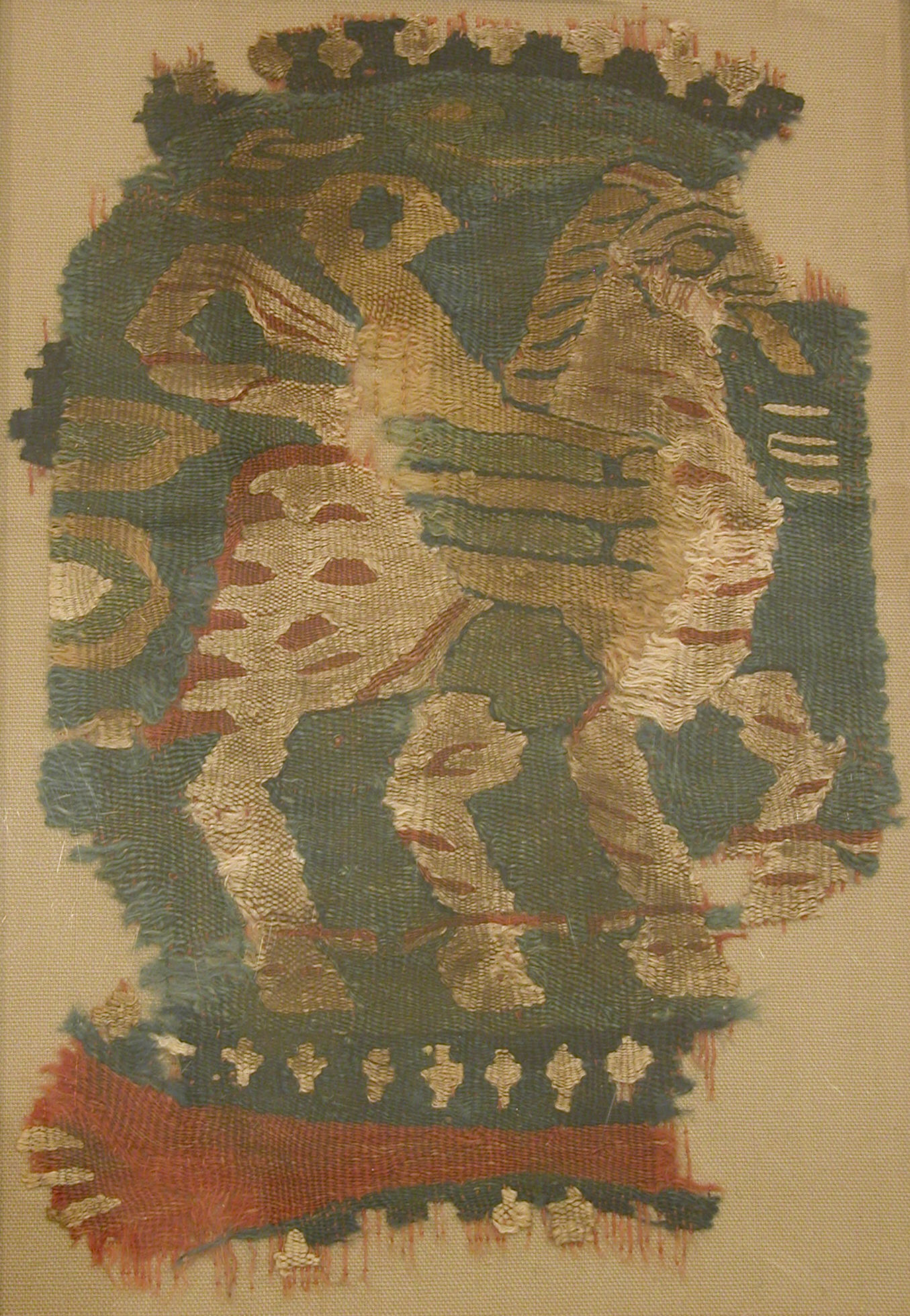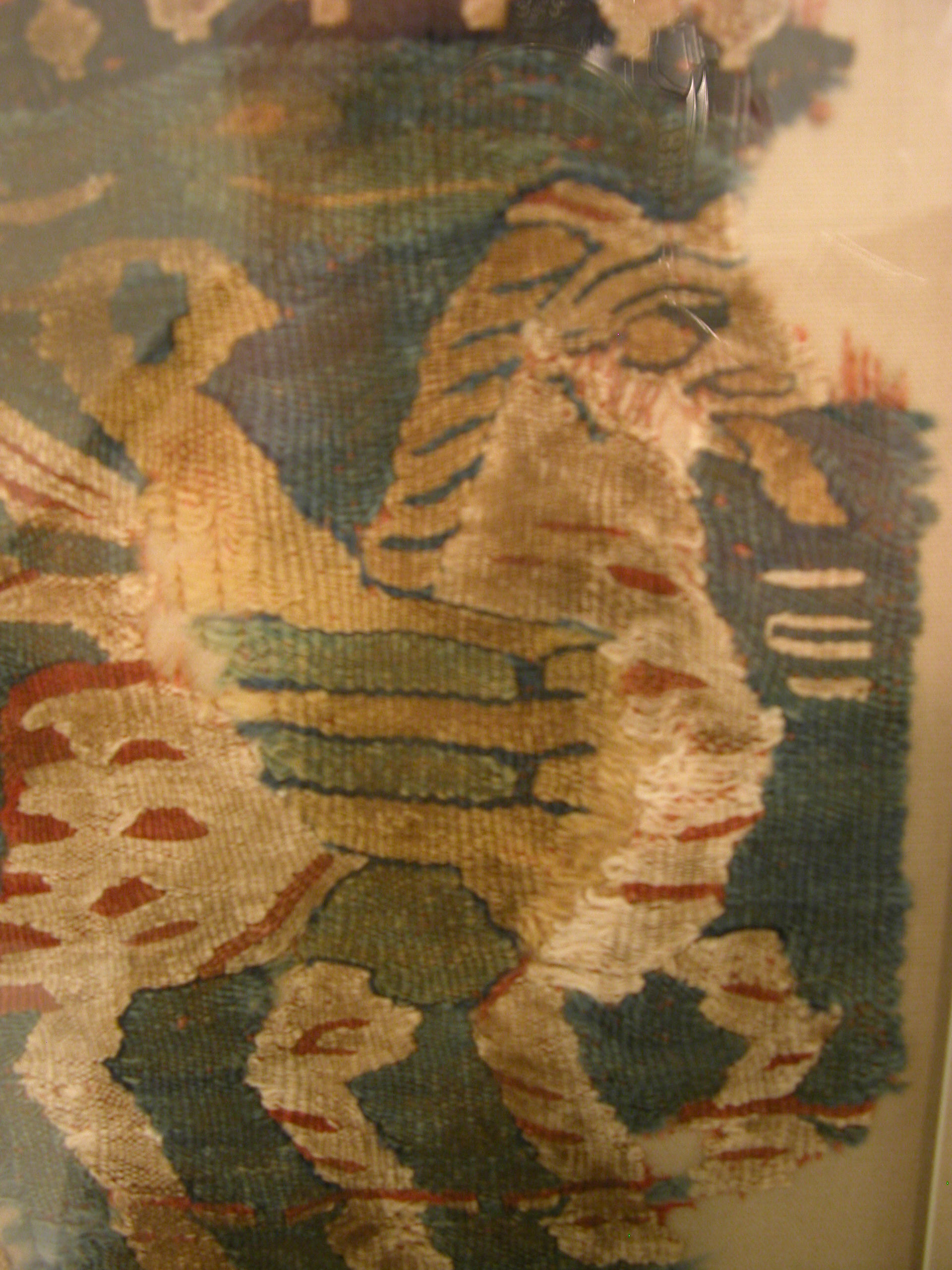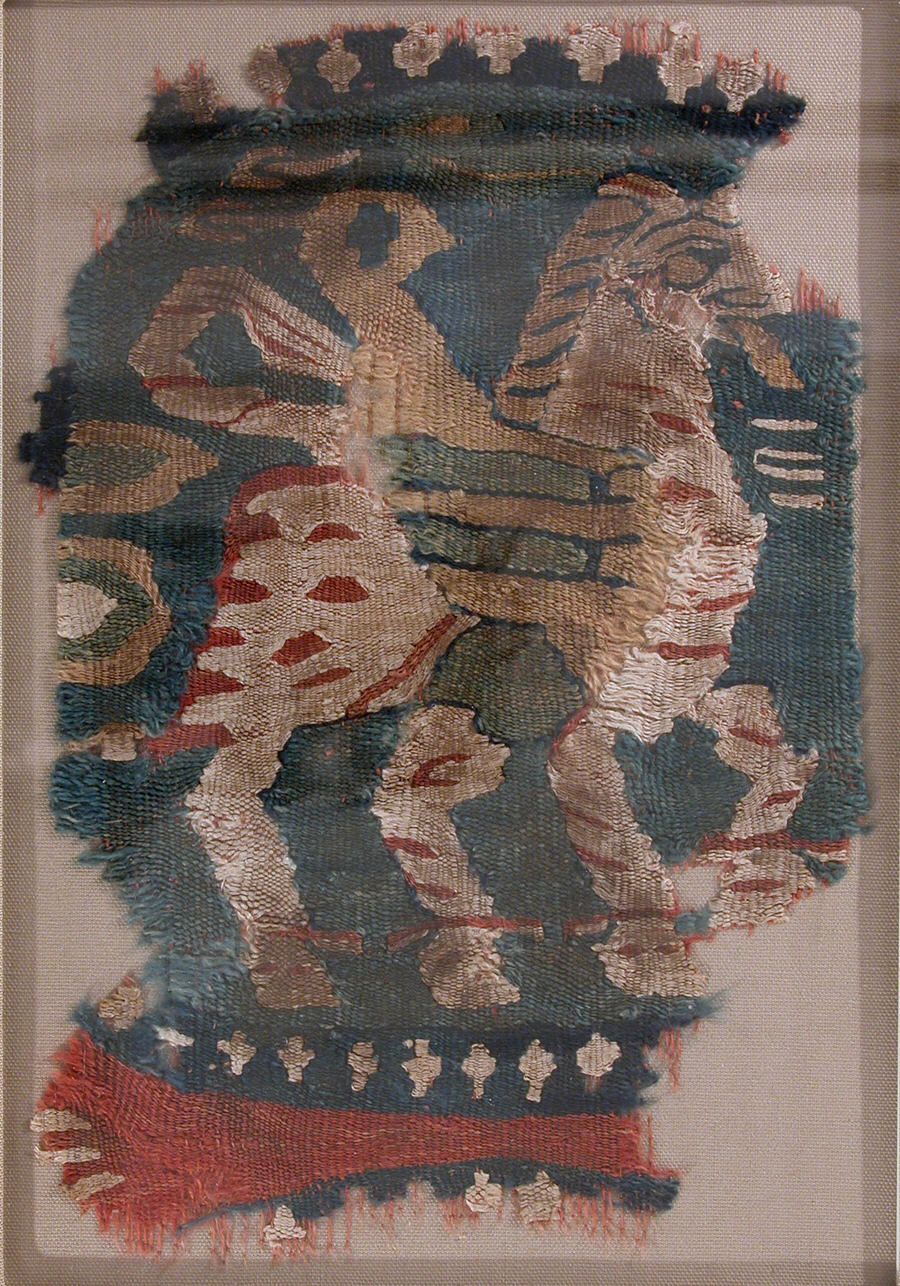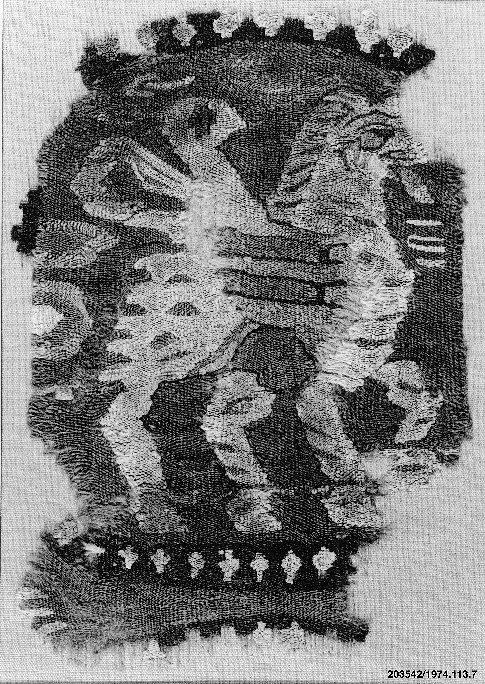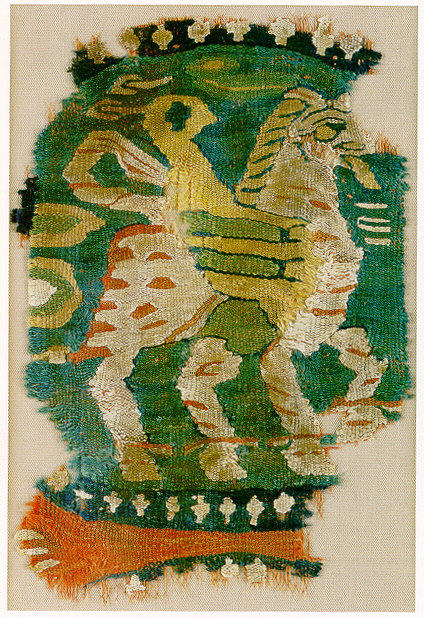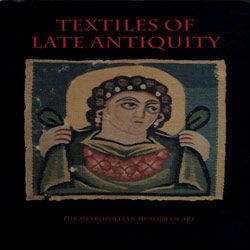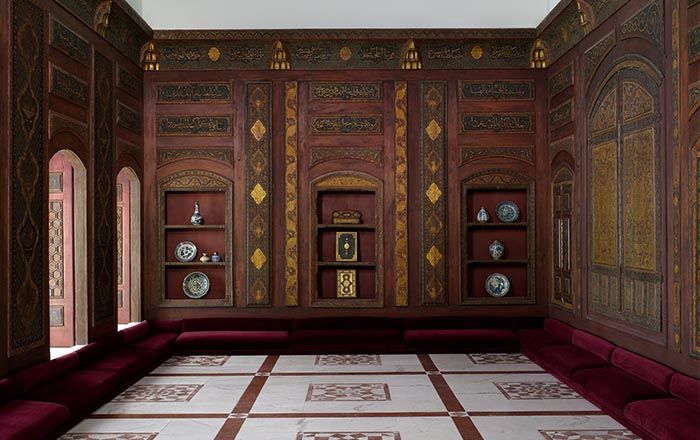Roundel with Winged Horse
Not on view
The extended tongue and long tail of this winged creature suggest that it may be a griffin, a part-lion, part-eagle emblem of power and protection common to the Byzantine and islamic worlds. The ultimate inspiration for this fragment may have been Sasanian, as it also resembles a winged horse with beribboned feet. Traces of another medallion at the lower edge of this piece suggest that it may have come from a hanging or other textile decorated with a repeat pattern of such roundels.
This image cannot be enlarged, viewed at full screen, or downloaded.
This artwork is meant to be viewed from right to left. Scroll left to view more.


